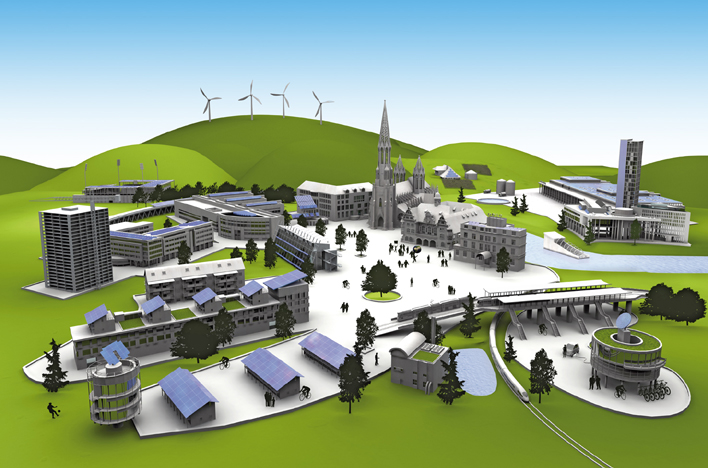China is building green cities but struggling to find residents

Bloomberg's insight into green cities in China
“ The air here is really good and everywhere you go it's green, ” said a 56-year-old resident, who moved to the area in 2013 when it was still a neglected suburb of Chengdu. " I do not regret my decision at all, the value of my apartment has doubled ".
In the first half of 2019 alone, the city signed contracts for over 300 billion yuan ($ 44 billion) of investments. When the major construction is completed this year, nearly 60% of the area will be dedicated to six artificial lakes, 30 parks and other green spaces. The population will be limited to 6.3 million by 2030 – a quarter the size of the largest cities in China, such as Shanghai.
China's green approach was designed to address two pressing environmental issues. Large-scale construction of urban infrastructure and residential housing has become one of the country's largest sources of greenhouse gases. Achieving the nation's urbanization goal could produce more than an extra gigaton of carbon dioxide, according to a study by University of Maryland researchers. At the same time, both the rural and urban environments have deteriorated. Most major cities in China suffer from polluted air and poor quality water. According to the Ministry of Ecology and the Environment, about 90% of the grasslands and 40% of the main wetlands in China are in degradation. In 2012, President Xi Jinping began to emphasize his "eco-civilization" theory, where development takes environmental costs into account. The aspiration has not always translated into concrete policies. The government guidelines on building new cities contain buzzwords like "low carbon" and "environmental protection", but few specific requirements in terms of energy efficiency and building materials.
Tianfu flourished thanks to Xi's personal approval. In 2018 he visited Chengdu and noted that its development should "bring out the characteristics of a park city". Local cadres quickly added "park city" to its official name and posted banners proclaiming its "park city" status. A city park research institute was established to help the project become “ a successful and world-renowned model ” for urbanization. Wu Changhua, senior researcher at the Beijing-based Think Tank Center for China and Globalization, said China's policies show that top leadership " is determined to restore the environment, but that's not always what motivates. local bureaucrats. Deng Wu, associate professor in the Department of Architecture and Built Environment at the University of Nottingham Ningbo China, said that among the hundreds of projects classified as "eco-cities", many do not employ sustainable strategies such as efficient buildings energy view, smart traffic layouts and renewable energy, said Deng Wu, associate professor in the Department of Architecture and the Built Environment of the University of Nottingham Ningbo China.
But cities need businesses and jobs to grow, not just beautiful parks. In the central business district of Tianfu, some local companies attracted by government subsidies and tax breaks have moved into the new high-rise buildings, although the area is far from busy. Global chains like Starbucks Corp. and Pizza Hut Inc. have opened waterfront outlets, where real estate agents sell apartments to pedestrians, talking about the government's investment in the area. " It is too early to say whether Tianfu will attract enough residents, " MIT's Zheng said. " There could be a lot more supply than demand if people didn't feel the need to move to a newly built city, especially where the existing city is not yet fully utilized, " he said, referring to Chengdu, which has become in recent years a popular destination for young people escaping high rents in places like Beijing and Shanghai.
This is a machine translation from Italian language of a post published on Start Magazine at the URL https://www.startmag.it/mondo/cina-citta-verdi/ on Sun, 27 Sep 2020 06:19:47 +0000.
